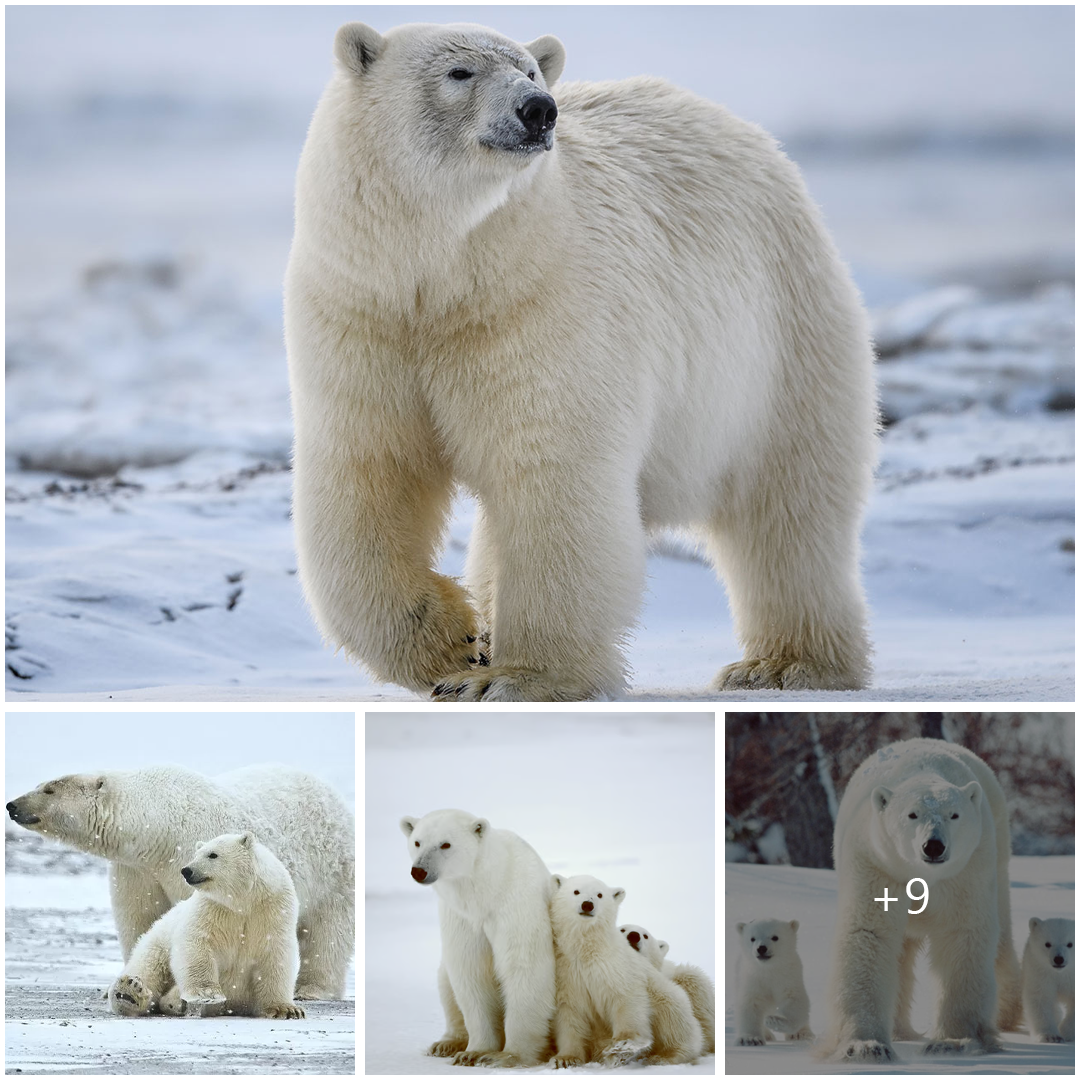
**The Majestic Polar Bear: Guardian of the Arctic**
**Introduction:**
Polar bears, with their snow-white fur and imposing presence, are iconic symbols of the Arctic. These majestic creatures are perfectly adapted to survive in one of the harshest environments on Earth. In this article, we delve into the fascinating world of polar bears, exploring their characteristics, habitat, behavior, and the challenges they face in a rapidly changing climate.
**The Arctic Habitat:**
Polar bears (Ursus maritimus) are primarily found in the Arctic Circle, inhabiting the icy landscapes of Alaska, Canada, Greenland, Norway, and Russia. Their habitat consists of sea ice, which serves as both a hunting ground and a platform for resting and raising their young. These bears are superbly adapted to the extreme cold, with a thick layer of blubber and dense fur that provides insulation against the freezing temperatures.
**Physical Adaptations:**
One of the most striking features of polar bears is their fur, which appears white but is actually transparent, with a hollow core that reflects light. This ingenious adaptation helps them blend into their snowy surroundings while providing warmth. Their large, powerful paws are equipped with sharp claws, ideal for gripping the slippery ice and capturing prey.

**Feeding Behavior:**
Polar bears are apex predators, primarily feeding on seals, which they hunt by patiently waiting near breathing holes in the ice or stalking them from underwater. Their keen sense of smell allows them to detect prey from miles away, making them highly efficient hunters. During the summer months, when sea ice melts, polar bears may resort to scavenging on carcasses or hunting other prey such as birds and small mammals.
**Social Structure:**
Polar bears are typically solitary animals, except during the breeding season or when mothers are raising their cubs. Female polar bears give birth to one to three cubs in snow dens, where they nurture and protect them until they are old enough to survive on their own. The bond between mother and cub is strong, with the mother teaching her offspring essential hunting and survival skills.
**Conservation Challenges:**
Despite their formidable adaptations, polar bears face increasing threats due to climate change. As sea ice diminishes at an alarming rate, polar bears are forced to travel greater distances in search of food, leading to higher energy expenditures and reduced reproductive success. Melting ice also brings human activities such as shipping, oil exploration, and tourism closer to polar bear habitats, increasing the risk of conflicts and habitat destruction.
**Conclusion:**
Polar bears are not only symbols of the Arctic wilderness but also indicators of the health of the ecosystem. As guardians of the ice, they play a vital role in maintaining the delicate balance of the region. Protecting polar bears and their habitat requires international cooperation, conservation efforts, and mitigating the effects of climate change. By safeguarding these magnificent creatures, we also safeguard the future of the Arctic and our planet as a whole.






